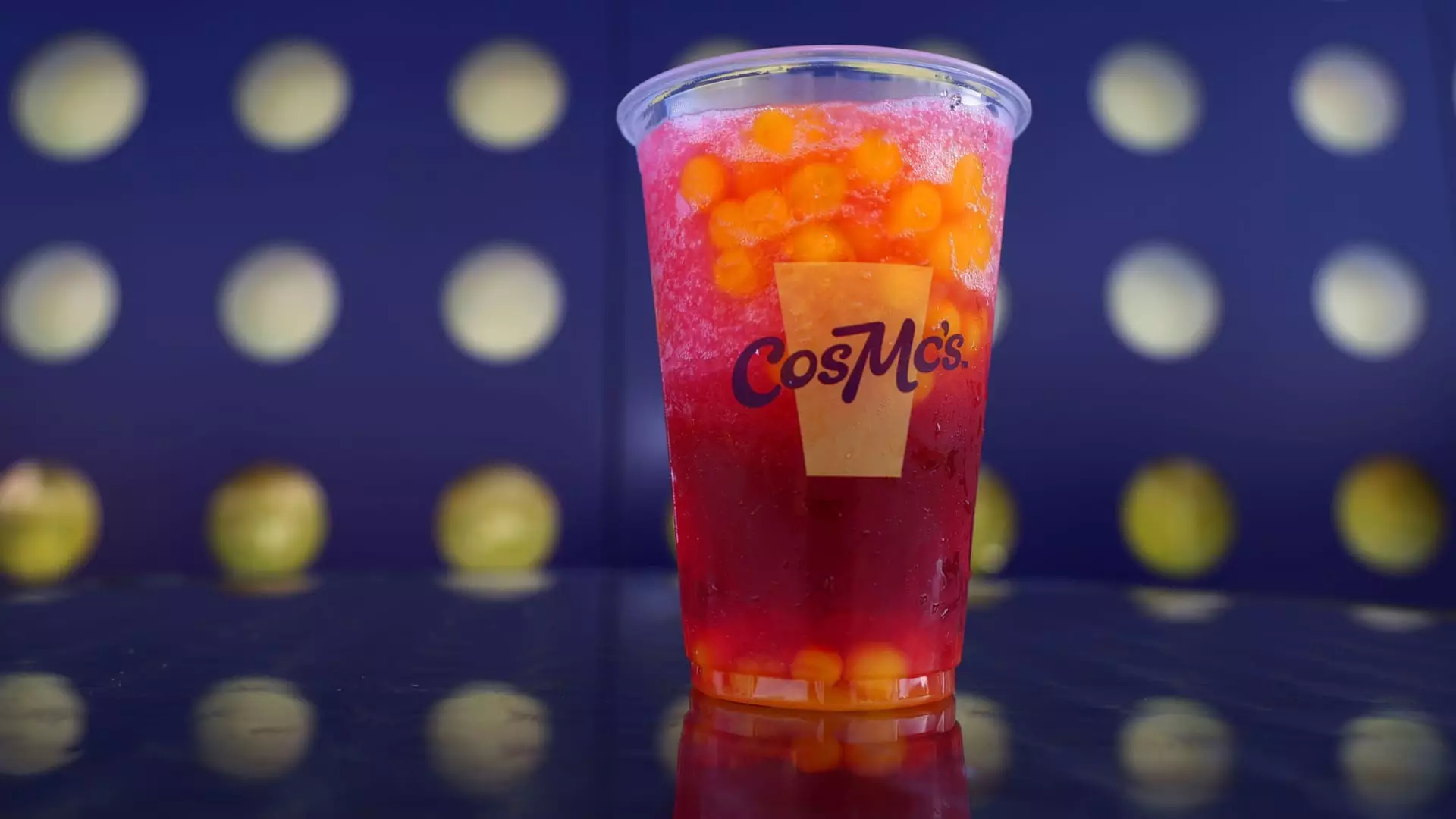In a marketplace defined by rapidly changing consumer preferences, fast-food brands are strategically pivoting towards an intriguing concoction of audacious beverages designed to resonate with the adventurous spirit of Gen Z. With regulations limiting sugary drinks and a palpable consumer shift away from traditional soda, restaurants are diving headfirst into experimental flavors and eye-catching presentations. Fast-food giants like Chick-fil-A, Taco Bell, and McDonald’s are no longer content with merely serving up fried chicken and burgers; they are increasingly making drinks the centerpiece of their offerings in a bid to attract a demographic that values unique experiences over mere transactions.
The shift in focus to beverages comes as both a response to declining soda sales—which have been on a downward spiral since the early 2000s—and an embrace of broader beverage trends that extend beyond coffee. By capturing the zeitgeist of the millennial and Gen Z markets, these chains are revamping traditional drink options with innovative twists that appeal to the pursuit of fresh experiences.
Adapting to Changing Palates
It’s noteworthy how the diversification of drinks on fast-food menus reflects the broader trends in the dining landscape. The incorporation of additional drink categories—like bold Refreshers, energizing aguas frescas, and flavored lemonades—represents a seismic shift. Fast-casual concepts focusing on beverages, such as the new Live Mas Café by Taco Bell, showcase a willingness to experiment with flavors and elevate drinks from mere sideshow status to the main act.
Moreover, data suggests that Gen Z consumers, who are significantly more adventurous with their flavor choices, are willing to engage with these new offerings. For example, bubble tea variants and trendy “dirty sodas” have taken off, thanks to their unique combinations tailored for young palates. There’s an inherent excitement in tasting something novel, which these establishments have confirmed through market-driven responses. According to industry experts, this creates a unique opportunity to introduce patrons to exotic flavors like yuzu and ube—two ingredients that would have likely remained untouched by traditional fast-food brands just a few years ago.
Crafting High-Impact Experiences
Another key aspect of this beverage evolution is the aesthetic appeal that accompanies these drinks. Chains are not only focusing on taste but also on visual marketing that leverages vibrant colors and Instagrammable presentations. The vibrancy of a Pineapple Dragonfruit drink isn’t merely about the flavor; it’s also about creating a product that delights the eye before it ever hits the palate. As Claire Conaghan from Datassential notes, today’s consumer is chasing “little treats”—small indulgences that usually can be enjoyed without significant financial strain.
Fast-food establishments recognize that these “little treats” can be emotionally stimulating experiences, reinforcing loyalty in a customer base that craves innovation. In a world where brand loyalty is increasingly fleeting, fast-food chains have delivered a lifeline through beverage innovation. The increasing popularity of “marriage” drinks, which combine trends (such as horchata coffee) or inventive ingredients (like boba) indicates a keen understanding of Gen Z’s desire for unique sensory adventures, beyond just food.
The Battle for Beverages
As beverage-focused concepts are on the rise, there is no subtle competition among chains. Major players are jockeying for position, and success could translate to billions in revenue by 2030. Taco Bell’s recent investor presentations highlight this goal, with aggressive plans to build a multi-billion-dollar beverage business. The introduction of over 30 new drink options through the Live Mas Café signifies Taco Bell’s commitment to beverage growth.
For companies like El Pollo Loco and Wendy’s, the journey has gone beyond merely expanding their drink offerings. They are collectively recognizing the profitability associated with beverages, as they typically deliver higher margins compared to food. By focusing on drinks that provide value, ease of implementation, and consumer satisfaction, these brands are identifying beverages as critical elements for future growth in their operations, especially as loyal customers frequently opt for drinks alongside their meals.
A Sweet Treat or a Guilt Trip?
Nonetheless, this transformation isn’t without its pitfalls. The escalating sugar content in many new beverages raises eyebrows—a characteristic that could clash with the growing consumer consciousness around health. While Gen Z is undoubtedly inclined to indulge, awareness of health implications looms larger in their decision-making processes. The line between treat and guilt can be precarious; an excitable approach to sugar can lace a thin veil over health considerations.
Fast-food chains latch onto this irony with finesse. They’re crafting an odd dichotomy—calling sugary drinks “little treats” while also simultaneously diving deeper into a wellness conversation. This complex dynamic requires a delicate balancing act. The hope is that by embracing new flavors and trendy experiences, fast-food chains can not only capture the Gen Z audience but also navigate the waters of growing concern surrounding sugar intake and the “health halo” these drinks must combat.
Exciting innovations in beverage choices represent a powerful new avenue for fast-food chains to engage younger consumers and redefine their identities. In a world growing less interested in traditional soda, the emphasis on refreshing and appealing drinks may be the driving force behind the future of fast food.

